Royal residences around the world you can visit for a glimpse of regal life
Make like a monarch
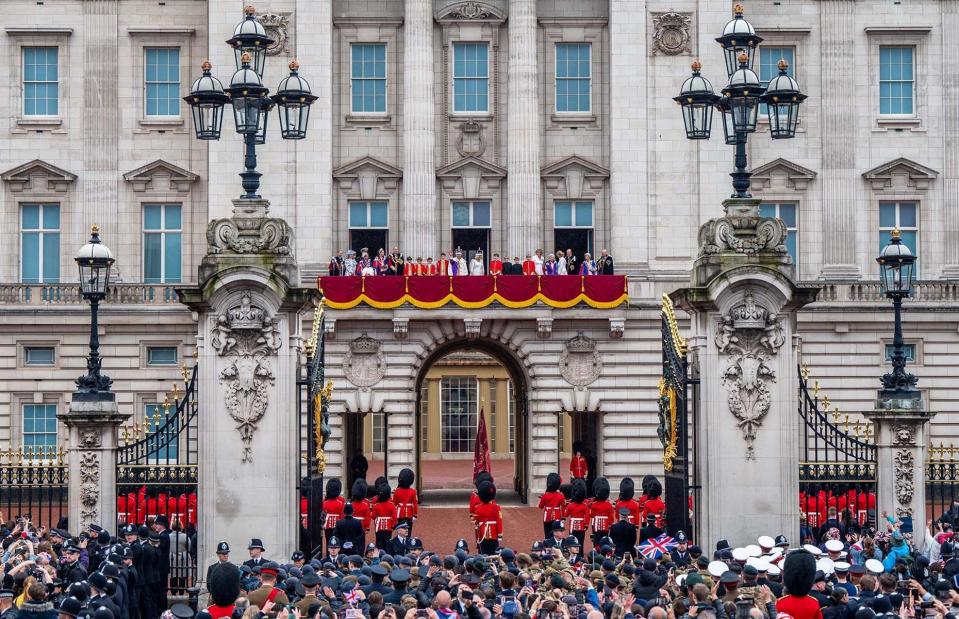
Brandon Bell/Getty Images
While living like a king or queen is just for the chosen few, there are many royal residences around the world where us ordinary folk can take a peek at what it’s like to live the regal life. Explore the chateaux where Gallic kings grew up, potter around palaces where Portuguese queens spent the summer and saunter around sprawling complexes where Chinese emperors held court. Many modern-day monarchs open up their palatial pads so the public can enjoy their grandiose royal apartments, opulent halls and manicured gardens too.
Read on to see where you can indulge your regal inclinations with a visit to a royal residence...
Windsor Castle, Windsor, England

Mistervlad/Shutterstock
Founded by William the Conqueror in the 11th century, Windsor Castle is the oldest and largest occupied castle in the world. It’s been home to 40 monarchs throughout its 1,000-year history and is where the late Queen Elizabeth ll is laid to rest. Visitors can watch the Changing of the Guard and take in the Gothic St George’s Chapel before heading inside for a roster of changing exhibitions and talks. Past displays have included a Prince Philip commemoration and an in-depth look at the late Queen's wardrobe throughout her reign.
Iolani Palace, Honolulu, Hawaii, USA
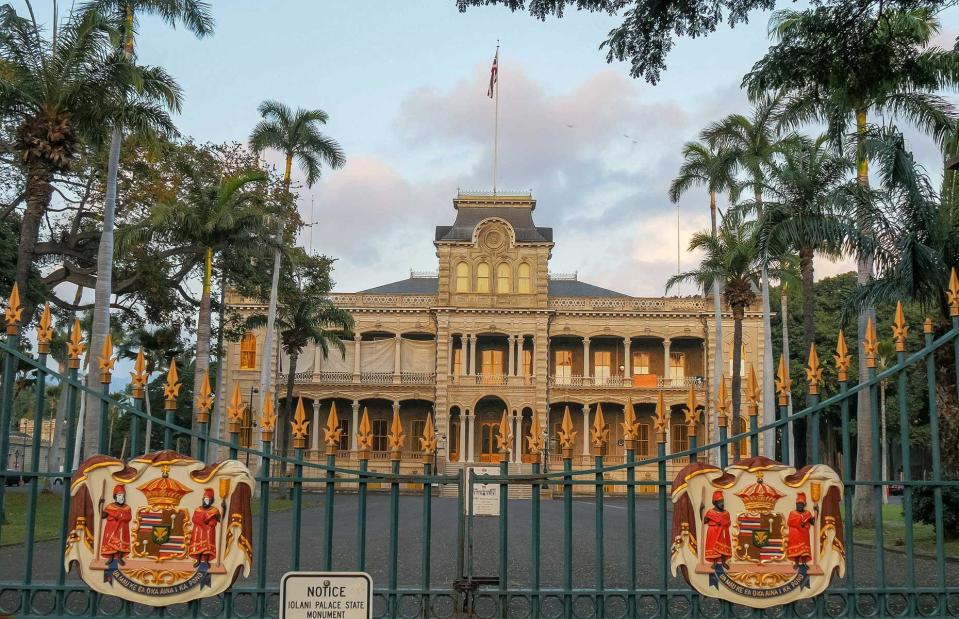
crbellette/Shutterstock
Did you know that Iolani Palace is the only official royal residence in the US? The home of Hawaii’s last reigning monarchs was built in 1882 by King Kalakaua and was also where his sister and successor, Queen Liliuokalani, lived. Restored to its former grandeur, a guided tour takes visitors to the first floor, which was dedicated to public receptions. You'll see the grand hall, state dining room, blue room and throne room. Next, you’ll ascend to the second floor to see the King and Queen’s suites, the music room and even the imprisonment room.
Royal Palace, Oslo, Norway

TTstudio/Shutterstock
Oslo’s Royal Palace is the most important royal residence in Norway, and happily the general public can take a sneak peek too. King Oscar I was the first king to reside here in 1849 and today it’s home to the country's royal court, with most official functions taking place in the palace. Guided tours run between June and August and take in the council chamber, banqueting hall and the stunning King Haakon VII suite. Items from the royal collection and local artworks are displayed as rotating exhibitions in the Queen Sonja Art Stable, while other permanent additions, from furniture to textiles, can be spotted during the guided tour.
Palace of Versailles, Versailles, France
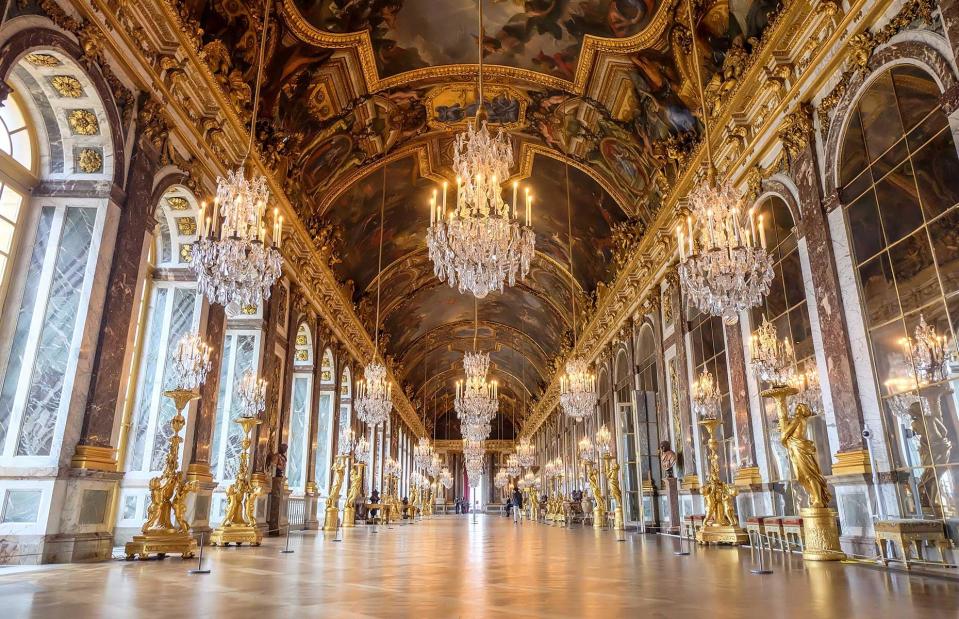
Mister_Knight/Shutterstock
The sprawling Palace of Versailles started life as a hunting pavilion for King Louis XIII in the early 17th century before Louis XIV extended it and moved the French court to the palace in 1682. The royal residence became known for its opulence, grand public spaces and ornate gardens, but was abandoned for a time after Louis XIV's death in 1715. In 1722, however, it was returned to its status as royal residence. Visitors can discover its fascinating history on a guided tour of some of the 2,300 rooms and pay a visit to the intimate Estate of Trianon, the gardens and the park.
Grand Palace, Bangkok, Thailand
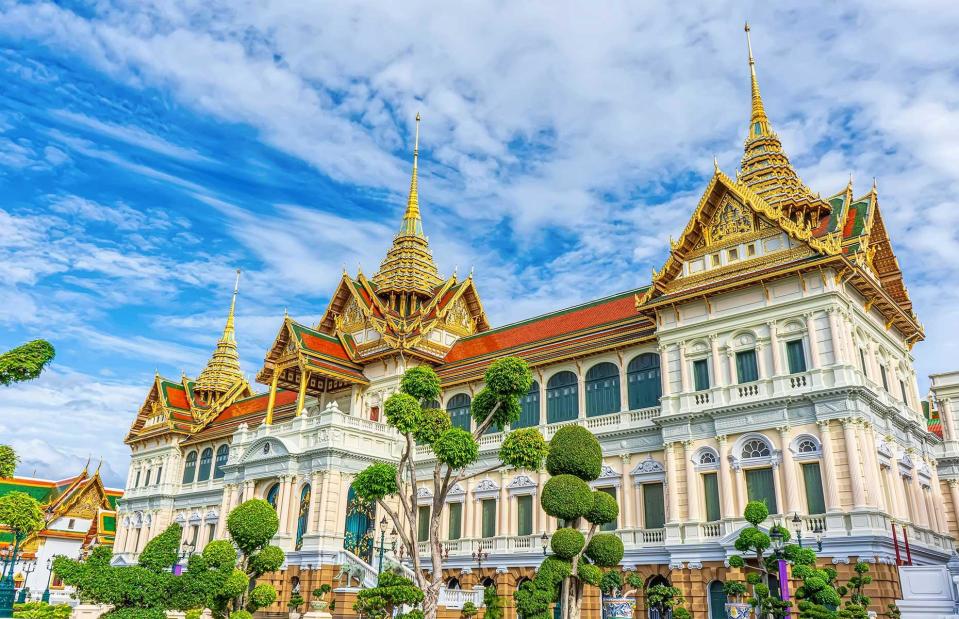
Decha Photography/Shutterstock
This sprawling site has been the official residence of the Kings of Siam (and later Thailand) since 1782. Made up of a complex of buildings, the Grand Palace was established by King Rama I to mark Bangkok as the new capital. You can step inside the palace itself and take in two of the impressive throne halls. Entrance also includes the Queen Sirikit Museum of Textiles, which displays garments, fabrics and materials relating to the royal court and queen, and Wat Phra Kaew (the Temple of the Emerald Buddha). Be aware there is a strict dress code for visitors.
Ludwigsburg Palace, Ludwigsburg, Germany

clearlens/Shutterstock
Take a tour of Ludwigsburg Palace and marvel at its unique blend of Baroque, Rococo and Neoclassical architectural styles. One of Europe’s largest (and original) Baroque buildings, the palace first served as a hunting lodge of Duke Eberhard Ludwig in 1704 and became his main residence in 1718. A four-wing expansion was completed in 1733. Today, visitors can take in the Palace Theatre; the private apartments of Duke Carl Eugen; and see themed exhibitions in the Ceramics Museum, Fashion Museum and Baroque Gallery. For families, there's Kinderreich, a unique interactive museum just for children.
Al Ain Palace Museum, Abu Dhabi, United Arab Emirates
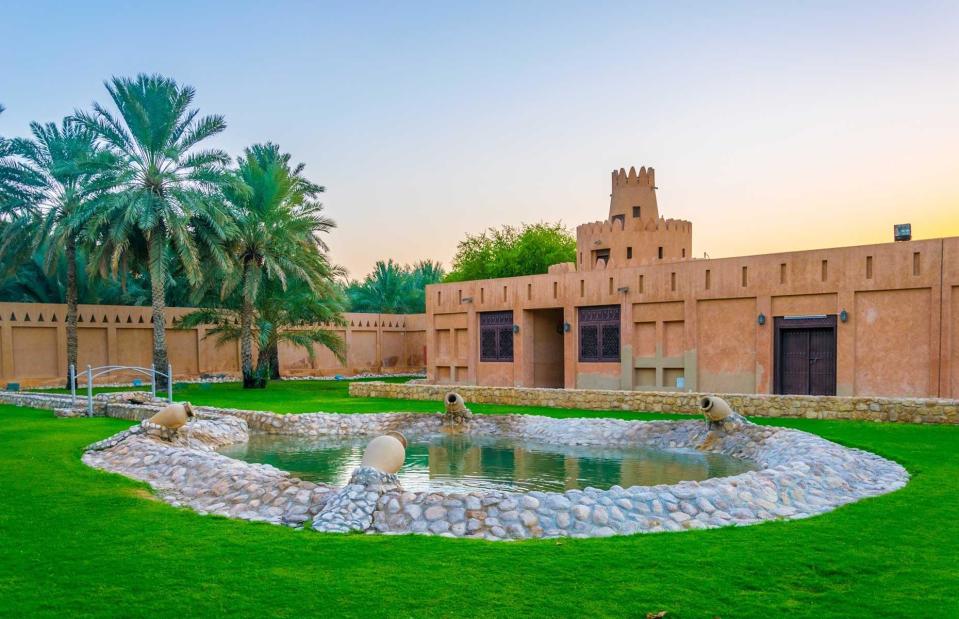
trabantos/Shutterstock
The founding father of the United Arab Emirates, Sheikh Zayed bin Sultan Al Nahyan, resided at Al Ain Palace with his family until the late 1960s. This palace-turned-museum has retained its traditional Emirati structure with a complex of courtyards and long, wide verandas. Offering a glimpse into the life of the ruling family, a visit sees you take in well-preserved rooms like the children’s study (complete with original tables and blackboards) and an outdoor space where official business took place.
Mon Repos Palace, Corfu, Greece

darko m/Shutterstock
Mon Repos Palace was originally a summer residence for the British governors of Corfu before being gifted to King George I of Greece in 1864. Its quiet parkland is filled with trees and paths leading to remnants of an ancient temple, while the palace itself now serves as an archaeological museum. The restored interior reflects Neoclassical features popular in the 19th century and there’s also original furniture on display. Mon Repos Palace is probably best known for being the birthplace of the late Prince Philip, who went on to become Queen Elizabeth II’s husband and the Duke of Edinburgh.
Drottningholm Palace, Sweden
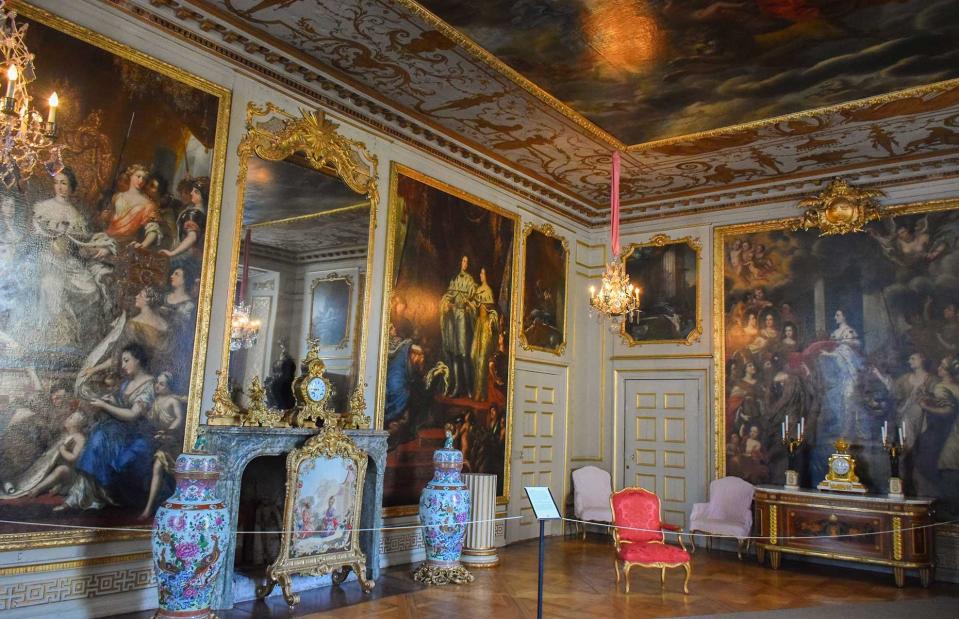
Nonnanat Yooyuen/Shutterstock
Built in the 17th century, Drottningholm Palace is the permanent residence of the Swedish royal family. Visitors are only permitted to tour the northern section but certainly won’t feel as if they've missed out on anything with self-guided or guided tours taking in the guest apartments, state apartments and Bernadotte apartments. You’ll encounter silver thrones and bedchambers, photographs and ceiling paintings, and plenty more. Visitors can also wind their way through the 17th-century Baroque garden. The park and palace are open throughout the year at selected times.
Liking this? Click on the Follow button above for more great stories from loveEXPLORING
Hawa Mahal, Jaipur, India

Phuong D. Nguyen/Shutterstock
Hawa Mahal, otherwise known as the Palace of the Winds (or Breeze), forms part of the Royal City Palace of Jaipur. With five storeys, the pink structure was built in 1799 for Rajput royal ladies to watch street scenes and processions without being seen themselves. Head there early in the morning, not just to beat the crowds but to see the sunlight flood through its honeycomb-shaped windows. Step into the Royal Palace's courtyard and on the east side is Hawa Mahal, where you can work your way up the steps and ramps to explore its upper floors. Afterwards, pay a visit to the museum with artefacts from Rajput rulers on display.
Wawel Royal Castle, Krakow, Poland
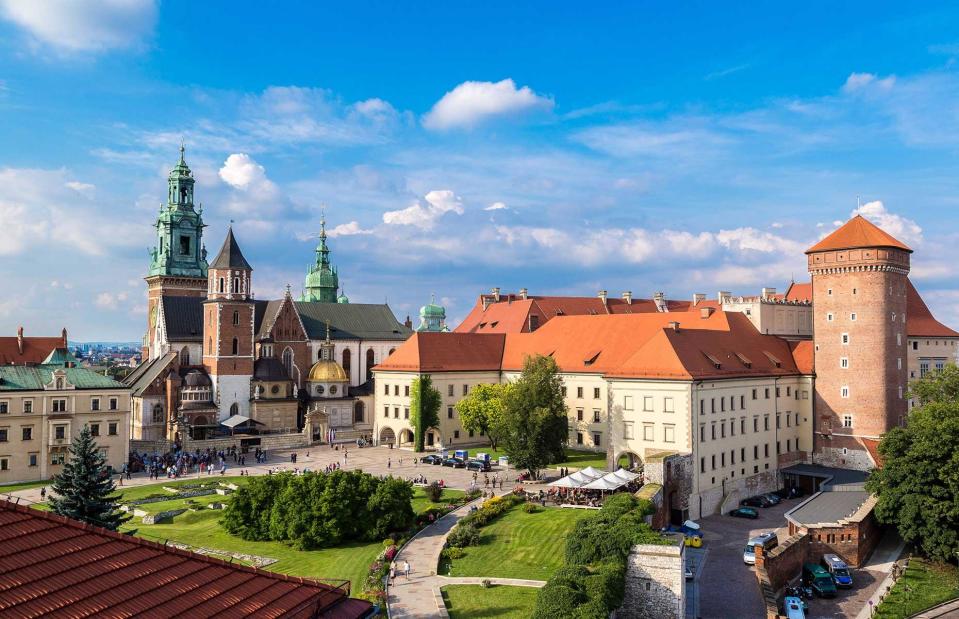
S-F/Shutterstock
Situated on an outcrop by the Vistula riverbank, Krakow's Wawel Royal Castle has had a complex history. The imperial site dates to the 11th century and is the site of significant events including the coronation of Polish king, Ladislaus I the Short, in the 14th century. Temporary and permanent exhibitions, as well as seasonal events, tell its turbulent history. The state rooms showcase Italian furniture and stucco ceilings, while the crown treasury and armoury display jewellery, armour and the Szczerbiec coronation sword (used to crown monarchs from 1320 to 1764). You can also explore the royal private apartments, church of Saint Gereon and the Sandomierska Tower.
Topkapi Palace, Istanbul, Turkey
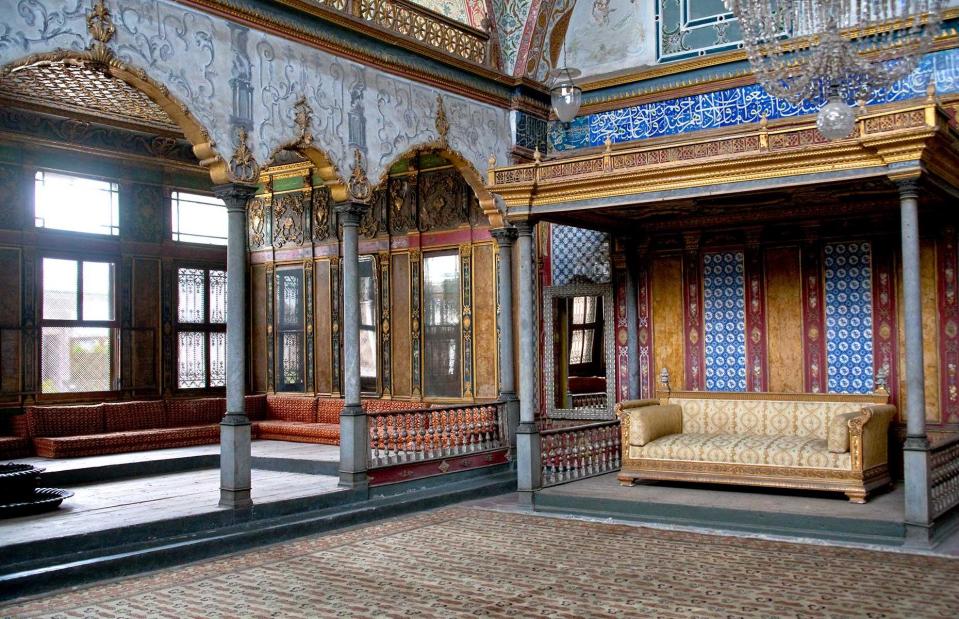
vvoe/Shutterstock
Topkapi Palace was constructed between 1460 and 1478 and served as the administrative, educational and artistic centre and residence of the Ottoman Empire for 100 years. When Turkey became a republic in 1924, the palace was converted into a museum, housing roughly 300,000 archive documents. Its four courtyards are split into different spaces: the first is Alay Square with a church, bakery and wood warehouse; the second is Divan Square with the Justice Tower and Royal Stables; the third is Enderun Courtyard with the Sultan’s Audience Hall and Privy Rooms; and the fourth features pavilions and hanging gardens.
Schonbrunn Palace, Vienna, Austria
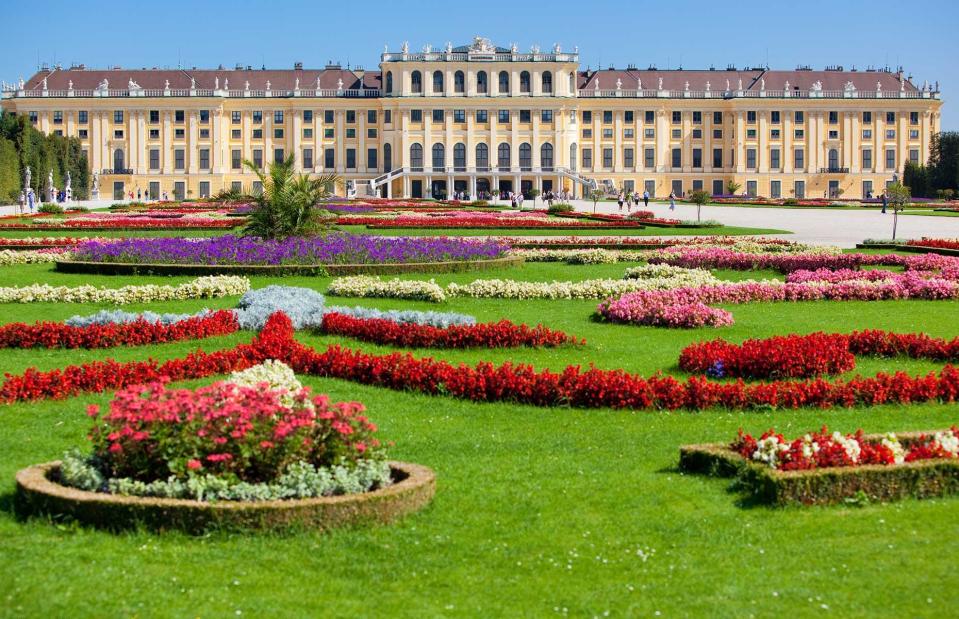
chaoss/Shutterstock
The expansive Schonbrunn Palace oozes opulence across its many state rooms and private apartments; there’s the Yellow Salon, Marie Antoinette dining room and 32-foot-wide (10m) Great Gallery, to name a few. First built as a hunting lodge at the end of the 17th century, the chateau went on to become an imperial summer residence and was the centre of court and political life under the reign of Empress Maria Theresa. Around 39 rooms are accessible to visitors, along with other spaces including the Children’s Museum, zoo and a maze.
Forbidden City, Beijing, China
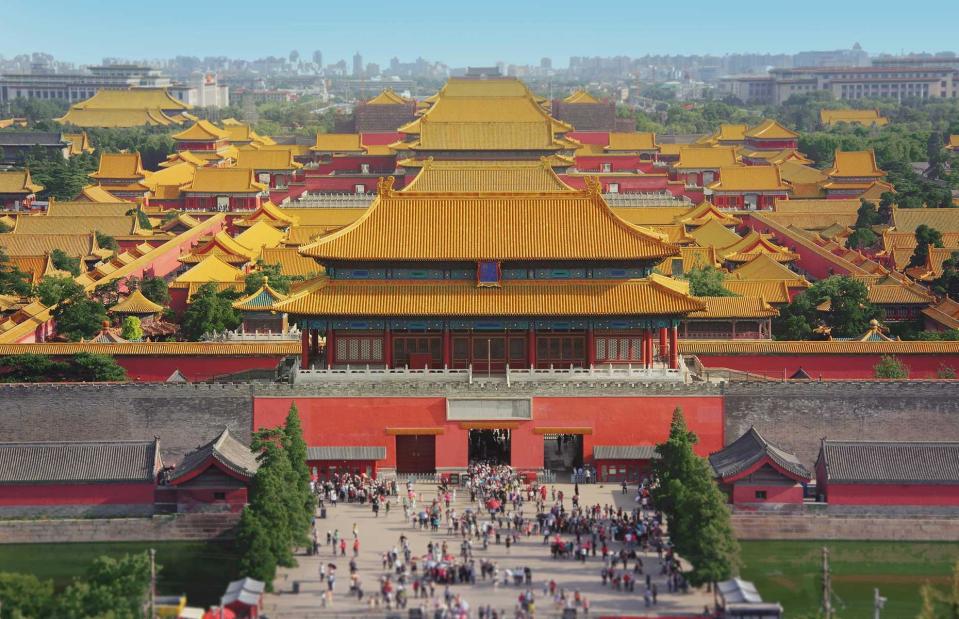
Sergii Rudiuk/Shutterstock
Not only is the Forbidden City the world’s largest imperial palace but it took one million workers 14 years to build. The capacious complex, which housed the Ming and Qing dynasties (1368-1912), is separated into three sections: the Defences; an Outer Court (for ceremonial purposes); and an Inner Court (the Emperor and his family’s residence). There’s no way you could possibly see it all in one day, but whatever you do see of this UNESCO World Heritage Site will leave a lasting impression, from the Palace of Heavenly Purity (used as an audience hall) to the Hall of Supreme Harmony with its elaborate Dragon Throne.
Royal Palace of Caserta, Caserta, Italy

Takashi Images/Shutterstock
Taking inspiration from the Palace of Versailles and grand 16th-century Roman and Tuscan villas, the Royal Palace of Caserta was built in 1752 by the House of Bourbon for the kings of Naples. There are 1,200 rooms and 34 staircases spread out across five floors. Don't miss a snoop around the Pinacoteca (picture gallery) to admire its collection of still lifes, battle scenes and portraits of the Bourbon family. The 296-acre palace grounds are just as impressive, with sculpture-clad cascades, an English garden and a long promenade-flanked fountain.
Royal Palace, Phnom Penh, Cambodia
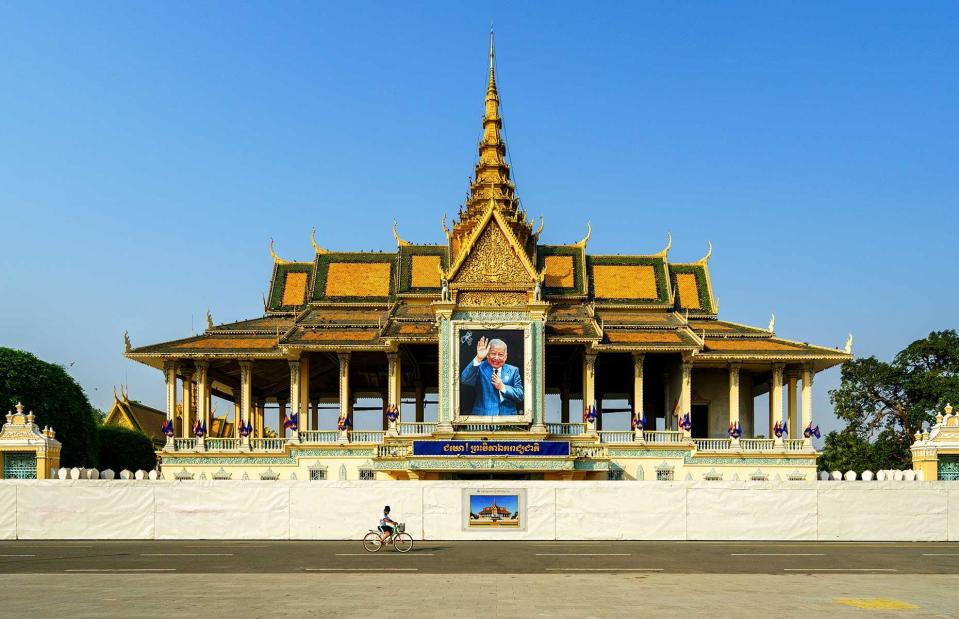
Nguyen Quang Ngoc Tonkin/Shutterstock
Cambodia’s Royal Palace is relatively new; it was built under King Norodom in 1866, when Phnom Penh became the new capital city. In 1876, France gifted the king the still-standing Napoleon III Pavilion and there’s also a Royal Court, but as the current king resides here only certain sections are accessible. These include the yellow Throne Hall, Chan Chaya Pavilion and the Silver Pagoda, while you can glimpse King Norodom Sihamoni's residence and royal guesthouse from the resting room. Keep an eye out for the royal blue flag, which denotes whether the monarch is in residence.
Royal Palace of Madrid, Madrid, Spain
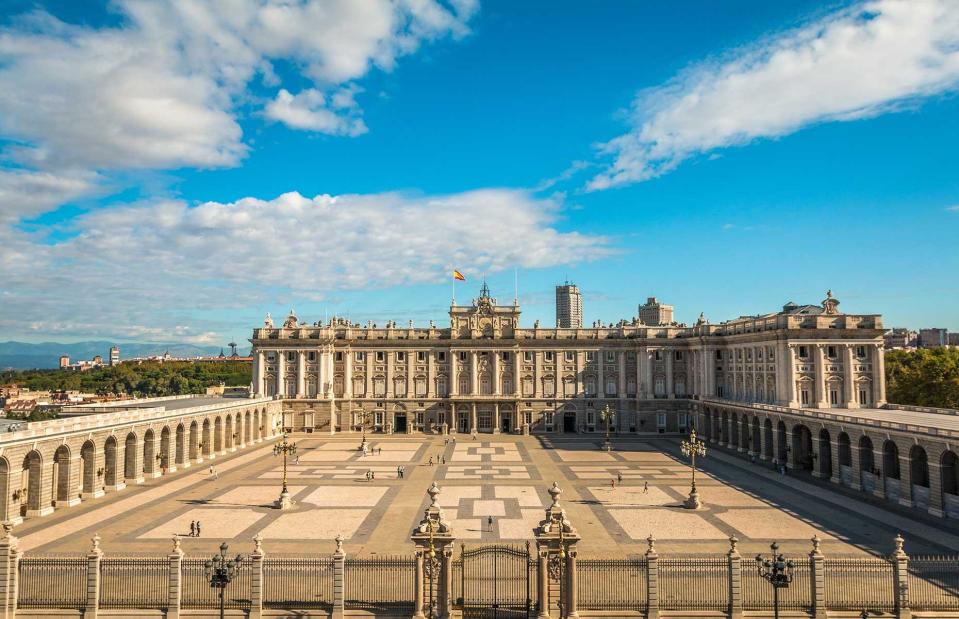
Pocholo Calapre/Shutterstock
With over 3,418 rooms, the Royal Palace of Madrid is one of the largest royal palaces in the world and is the official residence of the royal family of Spain, although they do not live there but in the Palacio de la Zarzuela on the fringes of the city. Used for state ceremonies and open to the public, visitors can take in the Royal Armoury, Royal Kitchen and Painting Gallery, which displays works by the likes of Caravaggio. It’s well worth taking an audio or guided tour to find out the captivating history behind this splendid royal residence, which wraps around a large parade ground.
Imperial Palace, Tokyo, Japan
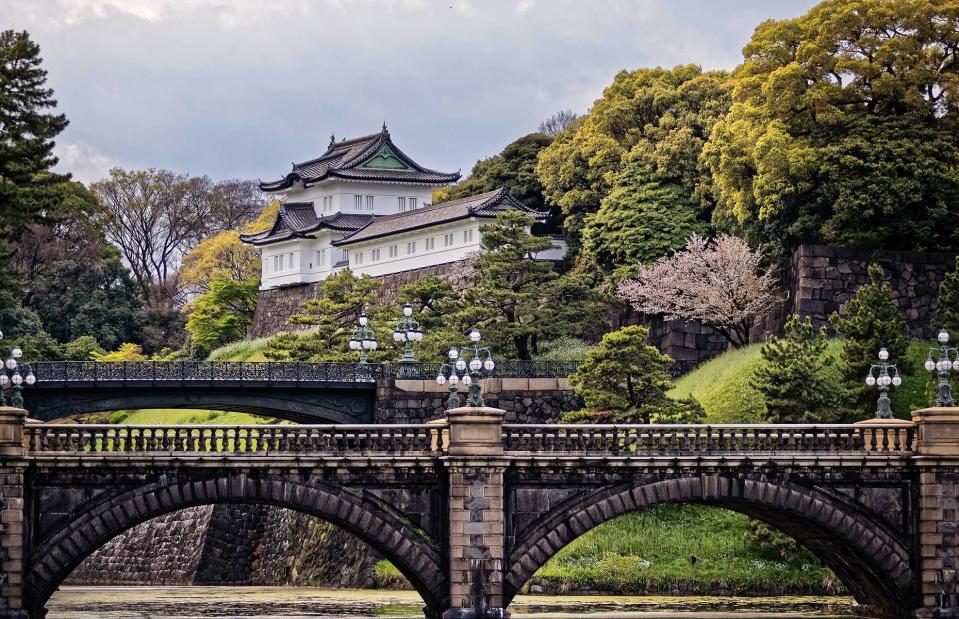
Guillermo Olaizola/Shutterstock
Tokyo’s Imperial Palace has been home to Japan’s imperial family since 1868, but you’ll need to make a special application via the Household Agency to visit its inner grounds. Otherwise, the palace opens just twice a year on 2 January and 23 February (the emperor’s birthday) when the public can access the inner palace grounds and the family make an appearance. Guided tours of the outer palace grounds (home to the National Garden, the Nijubashi bridges and the beautiful Sakuradamon Gate) are offered at other times of the year, but you can't actually go inside. The palace's East Gardens, which contain the Museum of Imperial Collections, are also open to the public.
Chateau d’Amboise, Loire Valley, France
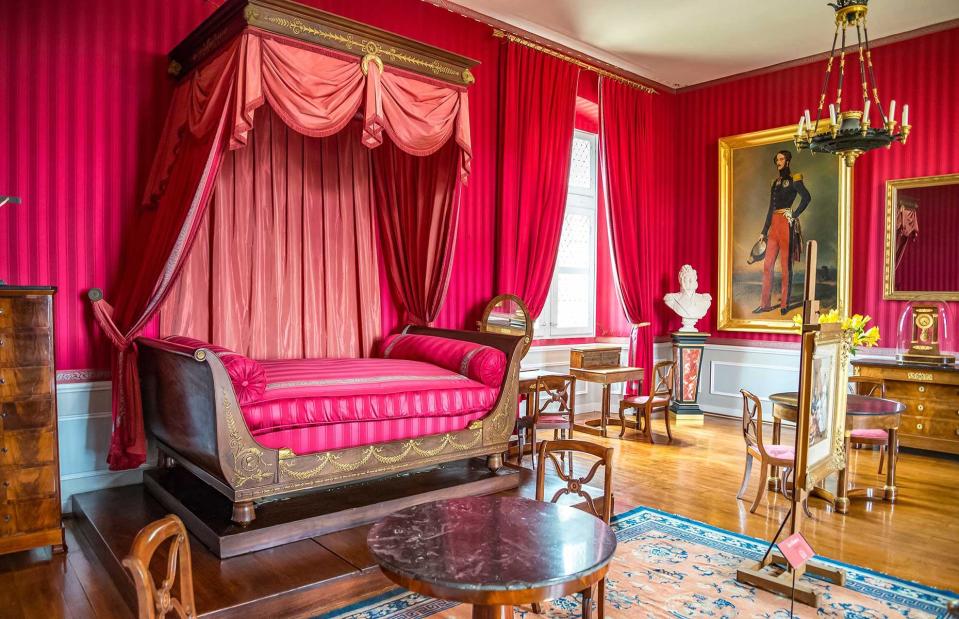
NaughtyNut/Shutterstock
Situated by the Loire River, the Chateau d’Amboise was a residence for French kings between the 15th and 19th centuries. This was where Charles VIII spent his childhood before turning it into a palace. Joan of Arc also passed through this high-walled chateau en route to Orleans. A visit today sees you take in the stunning grounds, which include a bust of artist Leonardo da Vinci. He lived and died at manor house Clos Luce nearby and his tomb is in the chateau’s chapel. Inside the royal residence, you can explore the Guard’s Room, Grand Council Chamber and the Drummer’s Room, as well as tapestries and paintings of French royalty.
Palacio Nacional da Pena, Sintra, Portugal
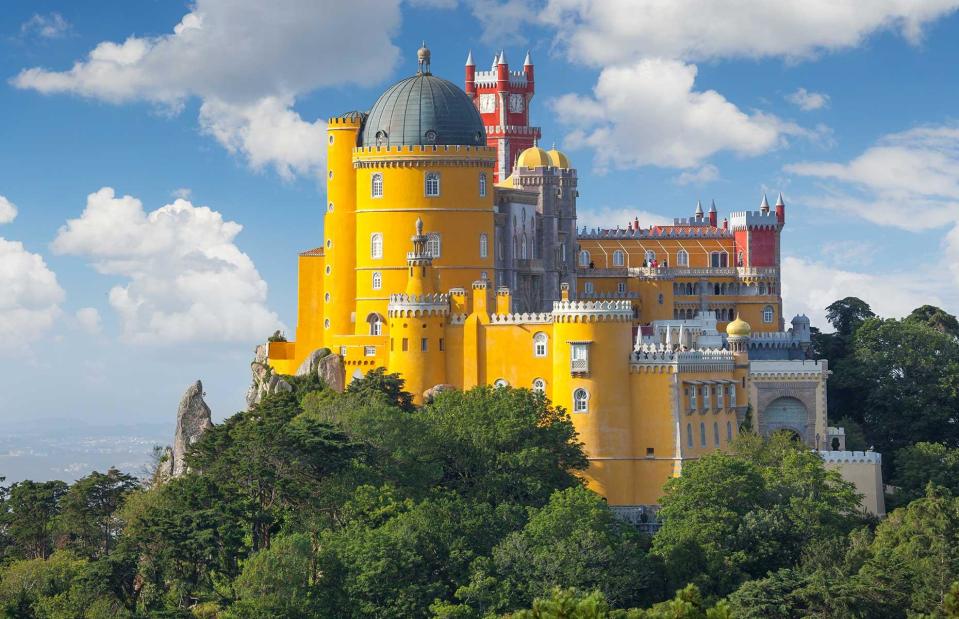
Taiga/Shutterstock
The complex of Palacio Nacional da Pena was added to from the 10th century onwards. Close to hunting grounds, it was one of the preferred residences for Portuguese royalty and almost every king and queen of Portugal spent some time there. With its far-reaching history comes a range of styles, including Gothic, Manuleine and Mudejar among others, while its vivid colours give it an almost whimsical appeal. A highlight of the palace's sumptuous halls is the Room of the Coat of Arms, where the crests of 72 leading households are included; gaze up at the centre of the cupola where 15th-century monarch Manuel I placed his own family's coat of arms.
Schleißheim Palace, Munich, Germany
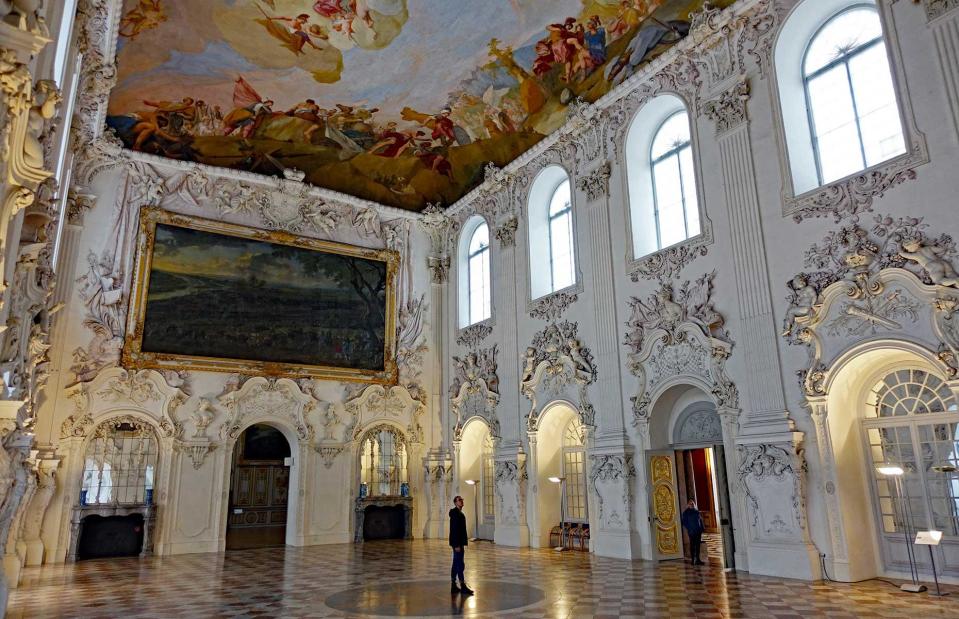
Allie_Caulfield/Flickr/CC BY 2.0
Made up of three palaces, Schleißheim Palace is within a Baroque garden park. What started off as a simple country manor producing beer and cheese grew into a royal residence for the Holy Roman Emperor Maximilian and his descendants. The sheer size of the New Palace is instantly impressive. The White Hall’s ceiling frescoes are the largest of their kind in Germany and depict war scenes from Max Emanuel’s life. This is a running theme with more scenes showcased in the Victory Hall. The 187-foot-long (57m) Grand Gallery offers beautiful views over the garden, while the state bedroom is covered in gold, frescoes and silk.
Fredensborg Palace, Slottet, Denmark
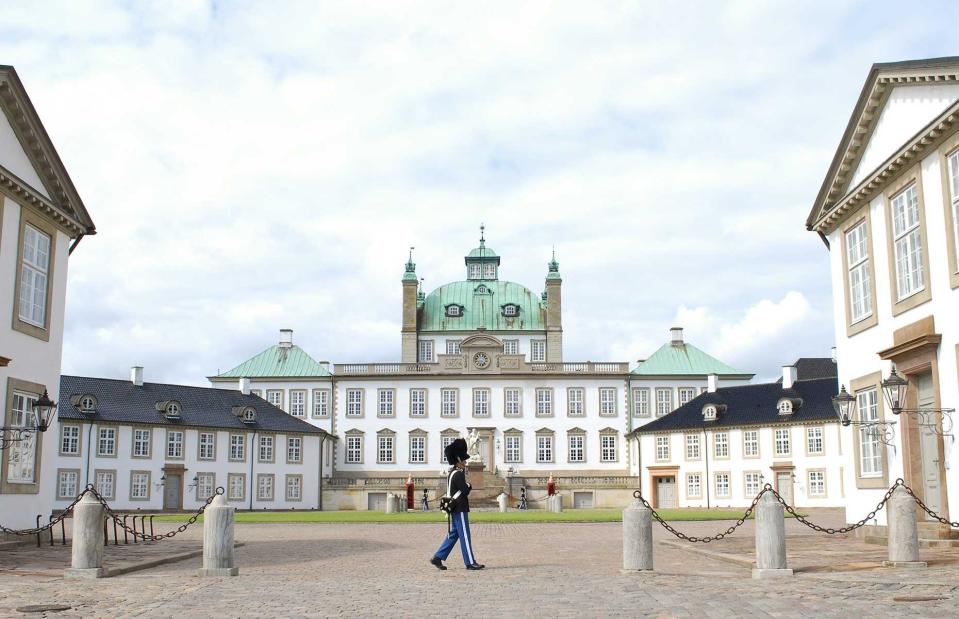
Dolfilms/Shutterstock
You’ll have to be quick to see inside Fredensborg Palace as it’s only open to the public every July. Its Palace Gardens, Baroque Gardens and The Valley of the Norsemen are open year-round. Completed in 1719, the palace and private gardens are traditionally reserved for the royal family and are used to celebrate weddings, anniversaries and birthdays. It is now the summer home of King Frederik and Queen Mary of Denmark, following the abdication of Queen Margrethe ll on 14 January 2024. During a tour, you’ll take in the palace chapel, private garden and the orangery, but the standout is the 89-foot-high (27m) Dome Hall. Since 1841, visiting dignitaries have left signature inscriptions on the window panes, including Sir Winston Churchill and Bill Clinton.
Royal Palace of Brussels, Brussels, Belgium
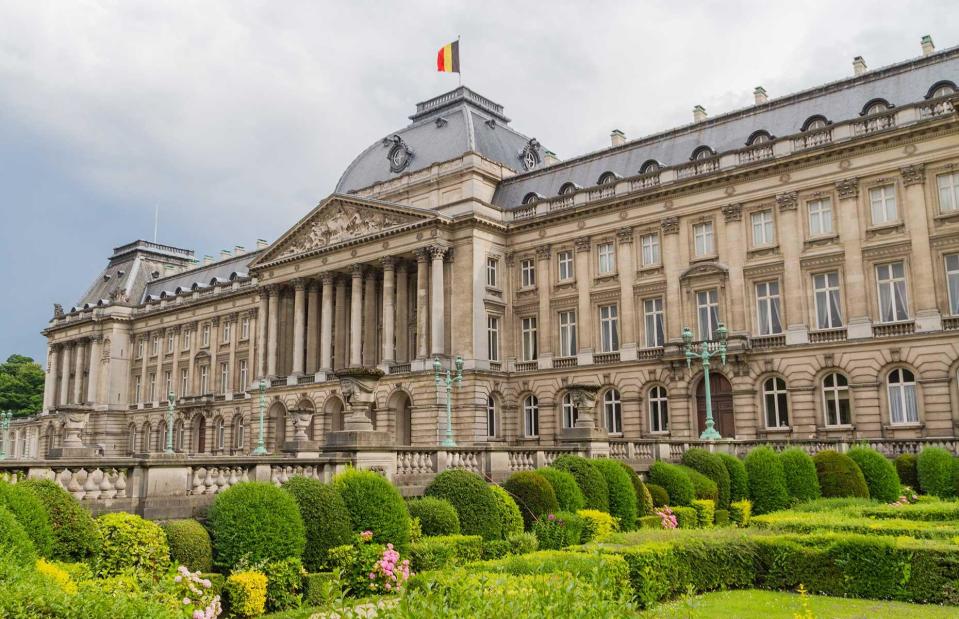
Andrey Starostin/Shutterstock
While it is closed throughout 2024 for renovation work, you can usually visit the Royal Palace of Brussels from Belgium's National Day on 21 July until September. It's the main workplace of the current monarch, Philippe of Belgium, and construction began on the building in the early 19th century and included a French-inspired Throne Room (built under King Leopold II) featuring sculptures by Rodin. There are impressive chandeliers and equestrian portraits in the Marble Hall at the back of the palace, while the jewel-encrusted ceiling is a highlight of the Hall of Mirrors. You can also see the Coburg Salon, which includes royal portraits, including one of Queen Victoria’s parents.
Balmoral Castle, Ballater, Scotland

A. Karnholz/Shutterstock
Constructed for Queen Victoria and Prince Albert in 1856, Balmoral Castle remains a private residence of the British royal family. While the Scottish holiday retreat has largely retained its original Victorian style, some modern improvements have been made, particularly by the late Queen Elizabeth II, who called the estate her favourite place on Earth. It's normally open to the public from early April to early August, when visitors can visit the grounds, gardens and impressive ballroom. It has been reported that King Charles is considering opening up more of the property to the public and turning it into a museum in his mother's memory.
The Prince’s Palace, Monte Carlo, Monaco

Pascal Le Segretain/Getty Images
Built as a fortress in 1191, the Prince’s Palace has a been a royal residence for more than 700 years. Prince Albert ll and Princess Charlene were married here in its main courtyard in 2011, with its stunning marble staircase and ornate archways. The courtyard was built by Monaco’s first Prince Honore ll, who began the extensive art collection now displayed throughout the palace, while Prince Rainier and his wife Princess Grace undertook major improvements that turned the palace into the attraction it is today. The State Apartments are open to the public from March to mid-October.
Gyeongbokgung Palace, Seoul, South Korea

Lukasz Malkiewicz/Alamy Stock Photo
One of the main historic palace complexes in Korea, Gyeongbokgung Palace dates to the 1300s and the early days of the Joseon Dynasty, when Korea became independent of China. Destroyed by the Japanese in the 1590s and again when they occupied Korea in the early 1900s, much of the complex, including the Heungnyemun Gate seen here, has been rebuilt, and is one of the top attractions in Seoul. Unlike European buildings, Korean palaces were built of wood and had many spacious courts.
Winter Palace, St Petersburg, Russia
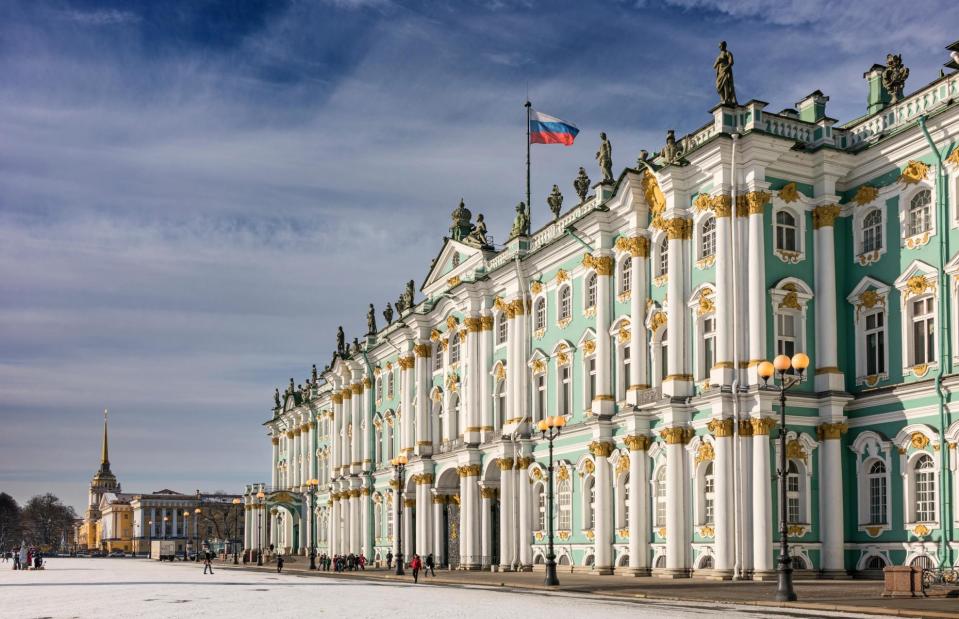
Quentin Bargate/Alamy Stock Photo
An architectural masterpiece that served as the official residence of the Russian tsars from the 18th to the early 20th century, the Winter Palace in St Petersburg is now part of the State Hermitage Museum. Designed by renowned architect Francesco Bartolomeo Rastrelli, it had over 1,500 rooms, many of which have been preserved and showcase the lavish lifestyle of the imperial family. After the February Revolution of 1917, the palace became the Museum of the Revolution, before being transformed into one of the largest art museums in the world.
Buckingham Palace, London, England
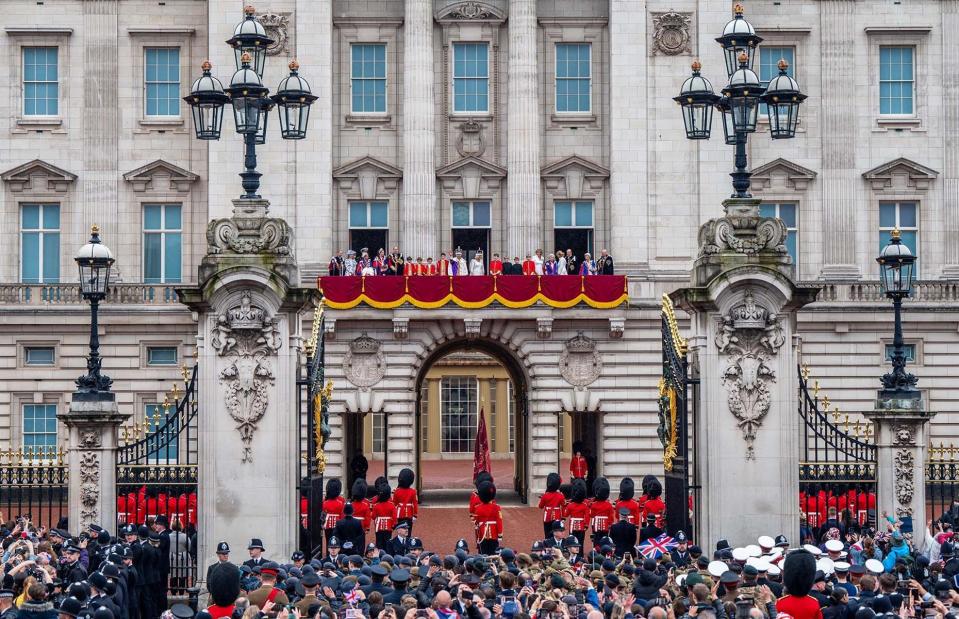
Brandon Bell/Getty Images
Buckingham Palace officially welcomes tourists to its grounds and state rooms every year from July until the end of September. The world-famous working palace was built in its first form in the early 17th century, during the reign of King James I, but Queen Victoria was the first monarch to reside here in 1837. Today it’s the focus of national and royal celebrations, and where King Charles lll receives formal and informal guests. Join one of the tours or opt for a 'Royal Day Out' ticket, which allows you to take in all three venues at the palace: the State Rooms, Queen’s Gallery and Royal Mews.
Now discover more pictures of the British Royal family's amazing homes


